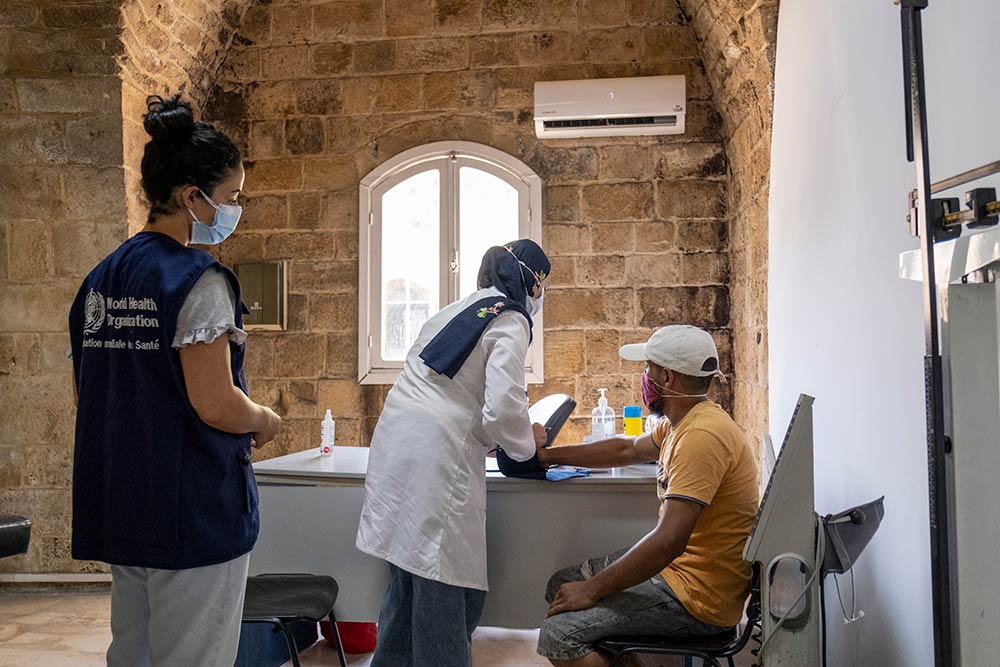
18 December 2022 | From 27 to 29 November 2022, more than 100 global and regional stakeholders and experts from across WHO (global, regional and country offices) and ministries of health convened virtually to address implementation and strengthening of noncommunicable disease (NCD) monitoring systems at primary health care level to bridge current gaps in data and information flow thus enabling countries to better manage and control NCDs and turn the tide on these conditions. This regional workshop is the first to take place following the launch of the NCD facility-based monitoring guidance, developed by WHO for NCD patient and programme monitoring. It includes a framework and a set of relevant, valid, and feasible standardized indicators to guide recording and reporting of health services data at the primary care level. The regional workshop was organized by the NCD Surveillance Programme at the WHO Regional Office for the Eastern Mediterranean and the Surveillance, Monitoring and Reporting Team at WHO headquarters in collaboration with the Department of Communicable Diseases and the Department of Science, Information and Dissemination at the WHO Regional Office for the Eastern Mediterranean.
During this 3-day workshop, discussions focused on: understanding the requirements (concepts, methods, etc.) for building a solid NCD monitoring system at primary health care level; sharing country experiences regarding implementation of NCD monitoring systems at primary health care level; and identifying the support needed from WHO and a way forward for countries to strengthen and implement NCD monitoring systems at primary health care level across the Region.
The NCD epidemic is a real and growing threat in the Eastern Mediterranean Region. It is the leading cause of death in the Region, killing more than 2.8 million people every year – 1 in 4 of these deaths is premature, occurring before the age of 70. These data show the scale of the NCD epidemic, which poses a challenge to achieving universal health coverage, health-related Sustainable Development Goals, and the regional vision of ‘Health for all by all’. For the majority of people living with NCDs, data show that they remain outside the health system, with their conditions unmanaged.
Countries need accurate, quality data to obtain a more holistic picture for the management and control of NCDs. In this case, data from health facilities is essential and should be used to complement data from population-based surveys. However, insufficient attention has been given to monitoring NCDs in health systems, particularly at primary health care level. And, in cases where NCDs are monitored at primary health care level, there are gaps in the accuracy, quality and standardization of these data. Also, gaps exist in monitoring and reporting of NCD outcomes. Moreover, data from health facilities are rarely linked to other sources of data.
Countries can use the framework from the NCD facility-based monitoring guidance to strengthen NCD monitoring by leveraging existing national health information systems, particularly routine health facility reporting systems and health facility survey systems. The regional workshop set the scene in this direction, paving the way for countries to continue working towards strengthening and implementing NCD monitoring systems at primary health care level for better management and control of NCDs. In the run up to 2030, WHO will continue to support countries to bridge gaps in data towards achieving universal health coverage, reducing premature deaths from NCDs by one third by 2030 (Sustainable Development Goal target 3.4), and the regional vision of ‘Health for all by all’.




